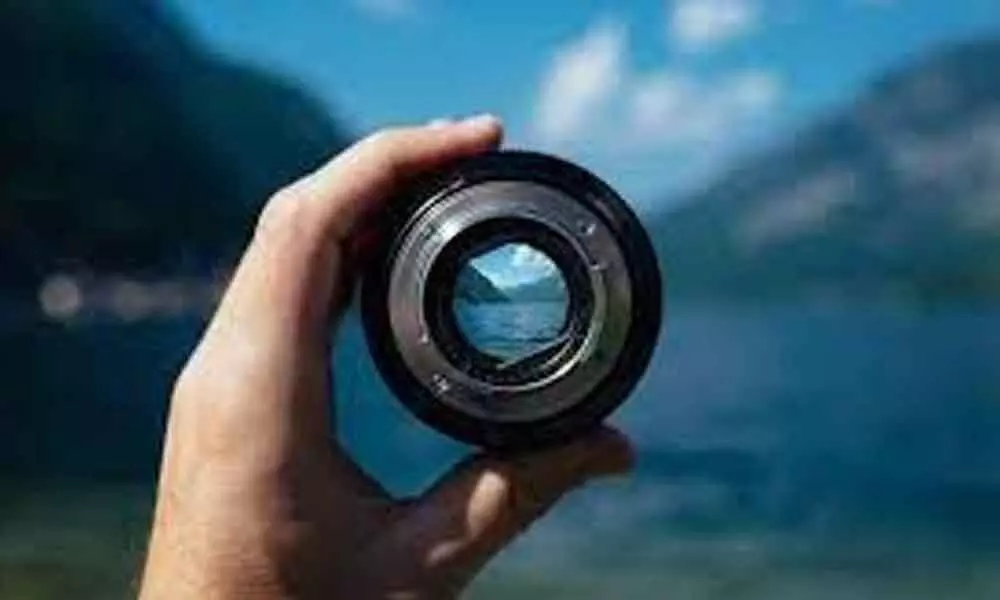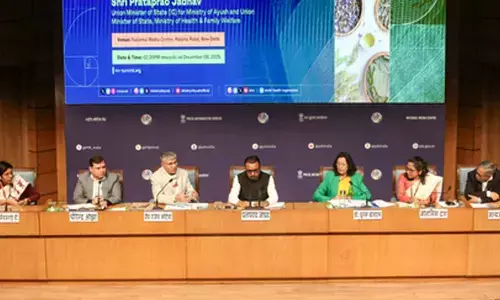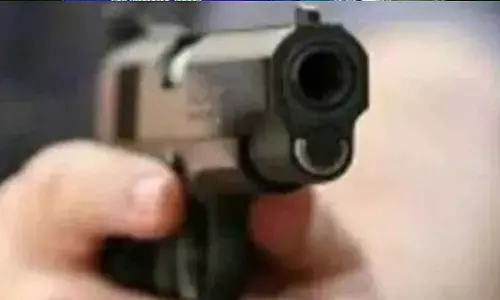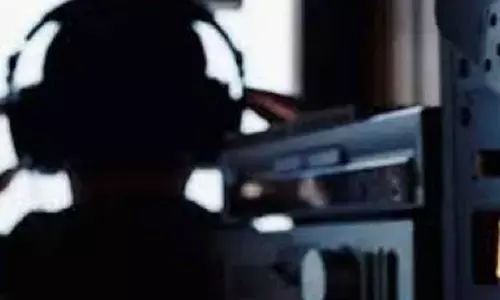When depths of feeling & field matter

When depths of feeling & field matter
In this column, in the article that appeared on April 5 this year, we had looked at the value of hobbies as a means of relaxation, diversion from stressful activities and giving expression to the creative urge lying unexplored in every human being.
In this column, in the article that appeared on April 5 this year, we had looked at the value of hobbies as a means of relaxation, diversion from stressful activities and giving expression to the creative urge lying unexplored in every human being.
Among the many hobbies that a person can cultivate, a very interesting candidate, albeit somewhat expensive, is the art of photography. Only a few days ago (July 12) the world celebrated the 127th Film Day, the day on which that particular film had first been introduced some 90 years ago. George Eastman is credited with having first introduced roll film and released the first roll film in 1888. Probably the oldest version of a camera is the pinhole camera, a simple affair with lens, and only with a tiny aperture (pinhole).
I had the good fortune of being introduced to this exciting pursuit early in my childhood. As a six-year-old, my first prize possession was a cute little baby Brownie camera which used a 127 speed film roll and gave out eight exposures. Over time, I graduated to more sophisticated cameras which used a 620 speed film and yielded up to (36) exposures. During my stay in Delhi with my parents in the early 1960s, I remember accompanying an elderly visiting couple on a visit to Agra during which I took some rather high-quality snaps, even though I say so myself.
There are many sophisticated brands including Rollieflex, Canon and Leica, some of which also come with optional extras, such as a flash and additional lenses, that can be added, when required, for purposes such as a close-up shot, a long shot or a wide-angle shot.
Time was when one had to go to a studio to get portraits taken, for purposes such as filling up college admission forms, or passport applications etc. With the passage of time and advancement of technology came miniature cameras used by secret agents (mostly movies!) satellites and then drones. And, now that digital photography has arrived for good. The era of rolls of films is a thing of the past.
Now with everyone having a cell phone with an inbuilt camera not only can one photograph others but even take a 'selfie'. While that is a welcome facility, the tendency to over indulge in the selfie habit has, on several occasions, led to hazardous situations resulting in injury and, even death. One cannot be too careful with modern gadgets. Modern tools, while undoubtedly game changing, come with their own caveats.
For larger groups had to be photographed, such as at the time of leaving school or college, or an institution where one had worked, a photographer was usually hired. He would come with a mounted instrument and flash. The instrument (and, yes, the photographer of himself) would remain covered in a black cloth for several minutes, while he tweaked the shutter speed, the distance and the resolution. When ready, he would emerge from under the cloth, asking us to say, "cheese" and take the shot. The photographer usually used what is called a 'slow – shutter' technology to achieve long exposure in order to capture the images sharply.
Photography exhibitions are frequently held, especially in large cities. While many of the exhibits are quite interesting, those depicting depth and subtlety while capturing landscapes, especially in contrasting bright areas with silhouettes are particularly attractive.Advanced technologies such as infrared photography, are also available, which are used in areas such as space research and exploration. Photography also played a significant role in establishing the validity of Einstein's theory of general relativity through the method of photographing the perihelion of mercury during a solar eclipse in an expedition organised by the famous physicist A.S. Eddington.
My stint as a child actor gave me a close look at the discipline of photography. For publicity purposes, and in between shots in the scenes, a few "stills" would be taken for use later on call-posters. An interesting manner of taking a shot was to use the trolley camera which moved on rails.
Trick photography was also popularised during those days and one recalls the amazing impact that genre had in the Telugu film 'Maya Bazaar.' The famous film photographer Marcus Bartley was the one who worked for the picture "Pelli Chesi Chudu" which got me noticed. Ishan Arya, who shot the unforgettable Bapu-Ramana movie 'Muthyala Muggu' was another expert cameraman.
Colour photography was a complicated matter those days, with the exposed role having to be sent to Bombay for developing and printing, a process which took a week or so. I also had friends who had small laboratories at home where they developed and printed the exposed rolls on their own.
One interesting fact that I learnt from my friends was that colour photographs essentially use only three basic colours, red, green and blue (RGB), with their shades substituting for others of the rainbow.
Personally, I have always been very fond of photographs depicting wildlife, especially those taken by adventurous photographs like Amitabh Baghel who undertakes arduous, and somewhat risky, expeditions into jungles and game sanctuaries, precisely for that purpose.
There have been several outstanding and award-winning movies portraying wildlife in great detail. I remember having been deeply impressed with Walt Disney's 'the living desert'. For sheer breathtaking real life incidents and sharpness of detail, I doubt that the likes of that effort has ever been produced again.
I came in touch with several great photographers of that era as I grew up. After joining service I found that photography was a popular occupation, especially in the twin cities of Hyderabad and Secunderabad, and the then Chief Secretary (when I joined service as a Sub Collector) Bhagwan Das, was the President of the Hyderabad Photography Club.
I once had the fascinating experience of travelling from Delhi to Rome with a well-known professional photographer who (while finishing of a whole bottle of champagne in the process!), who regaled me with extremely revealing stories about his experiences with famous politiciansand film artists.
The story goes that George Bernard Shaw was being photographed on his 90th birthday. The photographer, after the job was done, expressed the wish that he would have the privilege and honour of photographing Shaw on his 100th birthday as well. Shaw promptly retorted, "why young man, you look reasonably healthy to me!"
Recently a Telugu periodical, which wished to carry a story about me asked for good recent photograph of mine. I promptly responded that if it was good it would not be recent, and if it was recent, it would not be good!
(The writer is former Chief Secretary, Government of Andhra Pradesh)














